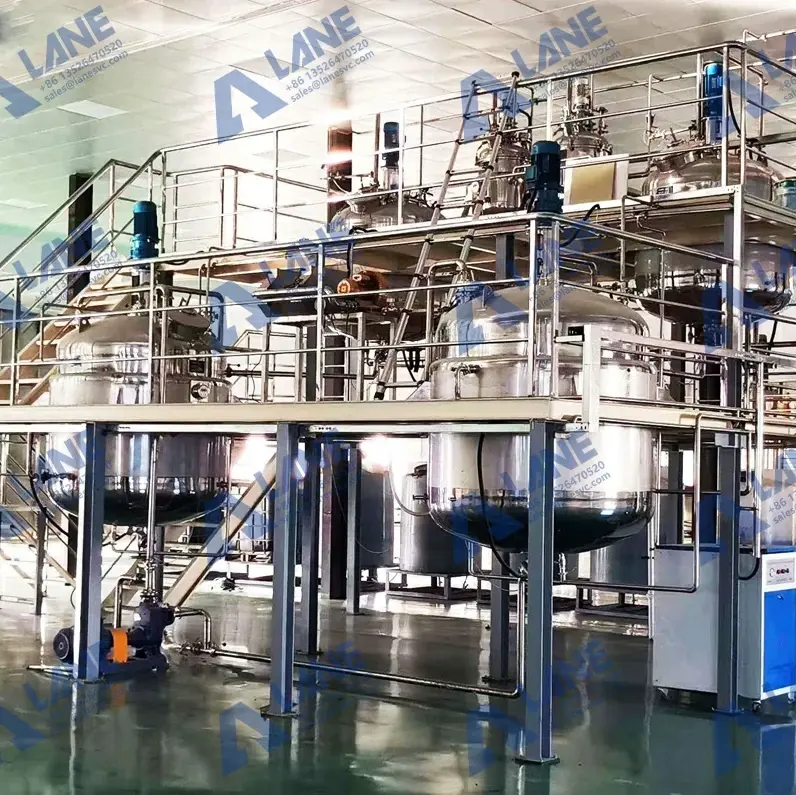Liquid Fertilizer with Trace Elements: Precision Nutrition for Modern Farming
- Nancy Ju
- Sep 17
- 4 min read
Agriculture is entering a new era where efficiency and precision matter more than ever. Farmers are no longer satisfied with supplying only nitrogen, phosphorus, and potassium (NPK). Instead, they recognize the importance of micronutrients—those small but powerful elements that can determine the success or failure of a harvest. A liquid fertilizer with trace elements delivers these nutrients directly and efficiently, helping crops overcome deficiencies, grow stronger, and produce higher-quality yields.
Unlike traditional granular fertilizers, liquid solutions enriched with trace elements can be applied through irrigation systems or foliar sprays, ensuring quick absorption and immediate impact. From large commercial farms to specialized greenhouse operations, the demand for liquid fertilizer with trace elements continues to rise as agriculture embraces sustainability and precision.

Why Trace Elements Are Vital for Crops
Though required in small amounts, trace elements play irreplaceable roles in plant physiology:
Zinc (Zn): Stimulates enzyme function, hormone production, and grain filling.
Boron (B): Promotes cell wall strength, pollen viability, and fruit development.
Iron (Fe): Crucial for chlorophyll synthesis and energy transfer.
Manganese (Mn): Supports nitrogen metabolism and photosynthesis.
Copper (Cu): Improves disease resistance and lignin formation.
Molybdenum (Mo): Facilitates nitrogen fixation in legumes.
Deficiencies in any of these elements can cause reduced yields, poor quality, and increased vulnerability to pests or diseases. Applying a liquid fertilizer with trace elements ensures crops receive a balanced diet, especially during sensitive growth stages such as flowering and fruit set.
How Liquid Fertilizer with Trace Elements is Produced
The production of a liquid fertilizer with trace elements involves a sequence of specialized steps and equipment designed to ensure nutrient stability and usability:
Raw Material Preparation
Trace minerals such as zinc sulfate, boric acid, and iron chelates are carefully selected. Organic additives like amino acids or seaweed extract may also be included to boost absorption.
Mixing in Stainless Steel Tanks
All materials are dissolved and blended in a stainless steel mixing tank, ensuring uniform distribution while preventing contamination or corrosion.
Filtration and Purification
The solution passes through a dual filter system that removes impurities, guaranteeing a clear, clog-free fertilizer suitable for fertigation or spraying.
Stabilization
Chelating agents and stabilizers are added to keep trace elements soluble and active during storage, preventing precipitation.
Packaging and Storage
The final product is packaged using automatic packaging machines into bottles, drums, or IBC tanks, ensuring accuracy and extended shelf life.
This workflow guarantees that each batch of liquid fertilizer with trace elements is consistent, reliable, and ready for modern agricultural applications.

Applications in Agriculture
The versatility of liquid fertilizer with trace elements makes it indispensable across diverse agricultural systems:
Field Crops: Zinc and iron supplements improve rice and maize yields.
Vegetables: Boron and manganese enhance fruiting in tomatoes, cucumbers, and peppers.
Fruit Orchards: Citrus and apple trees benefit from iron and boron sprays that improve flowering and fruit quality.
Greenhouse Crops: High-value crops like strawberries and lettuce require precise micronutrient solutions for premium production.
Hydroponics: Nutrient solutions enriched with trace elements support soilless cultivation.
Advantages of Liquid Fertilizer with Trace Elements
Feature | Benefit for Farmers |
Fast Absorption | Immediate nutrient uptake via foliar spray or fertigation. |
Precision Nutrition | Provides targeted micronutrients where and when crops need them. |
Flexible Application | Compatible with modern irrigation systems and drones. |
Improved Crop Quality | Enhances color, taste, and shelf life of produce. |
Environmental Sustainability | Reduces nutrient leaching and minimizes waste. |
By using a liquid fertilizer with trace elements, farmers achieve higher efficiency while promoting eco-friendly agricultural practices.
Case Study 1: Grape Growers in Chile
In Chile’s wine-producing valleys, vineyards struggled with irregular fruit development due to boron and zinc deficiencies. By introducing a liquid fertilizer with trace elements through drip irrigation, farmers improved grape uniformity and sugar content. The vineyards reported a 22% increase in yield and higher market value for their wines.
Case Study 2: Maize Farmers in Nigeria
In northern Nigeria, maize farmers experienced poor chlorophyll development caused by iron deficiency in sandy soils. They adopted foliar spraying with a liquid fertilizer with trace elements, leading to stronger plant growth and higher grain production. Yields increased by 18%, significantly boosting household income and local food supply.

Challenges and Solutions
Precipitation Risk: Trace minerals may settle if not stabilized. Solution: Use chelating agents and advanced mixers.
Storage Concerns: High temperatures can reduce stability. Solution: Store in shaded, ventilated facilities.
Higher Initial Costs: Liquid fertilizers may seem more expensive than granules. Solution: Highlight efficiency and crop quality benefits that offset costs.
Innovation and Future Trends
The future of liquid fertilizer with trace elements lies in precision agriculture and sustainability:
Smart Fertigation: IoT-enabled sensors will adjust micronutrient delivery in real time based on soil and crop needs.
Biostimulant Integration: Combining trace elements with microbial extracts or amino acids to enhance plant stress resistance.
Nano-Chelation Technology: Ensuring even better solubility and uptake of micronutrients.
Green Production: Using renewable energy and natural sources for trace elements to meet organic certification standards.
As agriculture becomes increasingly data-driven, liquid fertilizer with trace elements will play a key role in delivering precision nutrition efficiently.
The liquid fertilizer with trace elements is more than just a supplement—it is a tool for precision farming that empowers crops to achieve their full potential. By addressing hidden deficiencies, improving quality, and supporting sustainable practices, it bridges the gap between traditional farming and modern, eco-friendly agriculture.
From Chilean vineyards to Nigerian maize fields, real-world results demonstrate how this technology is transforming agriculture. As innovation continues, farmers and agribusinesses that adopt liquid fertilizer with trace elements will remain ahead in the pursuit of higher yields, better food quality, and long-term soil health.
Email: sales@lanesvc.com
Contact number: +86 13526470520
Whatsapp: +86 13526470520






Comments